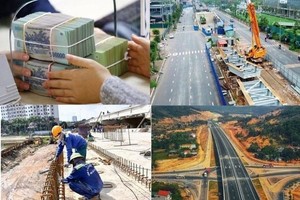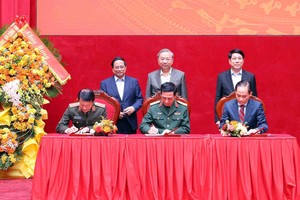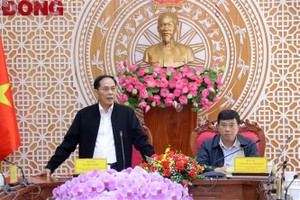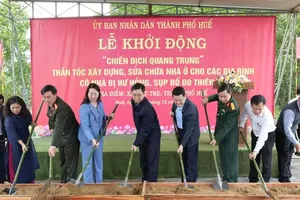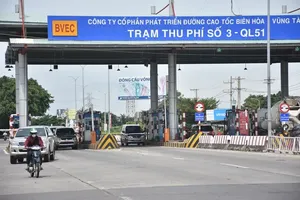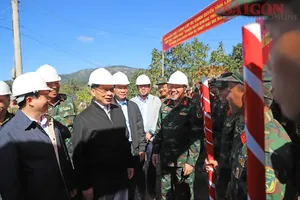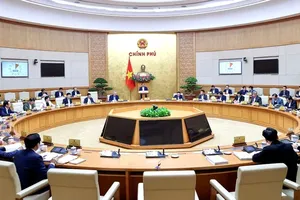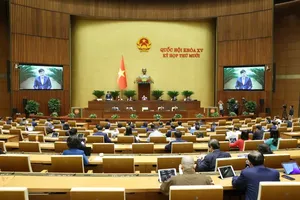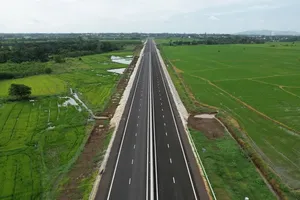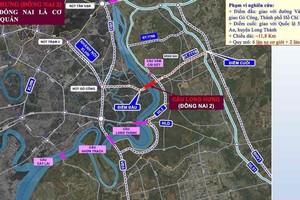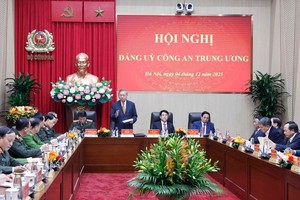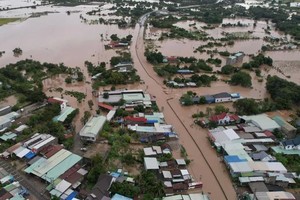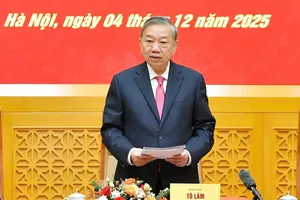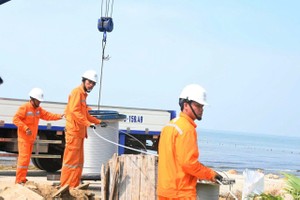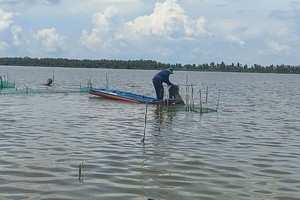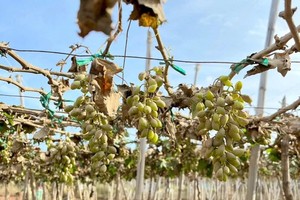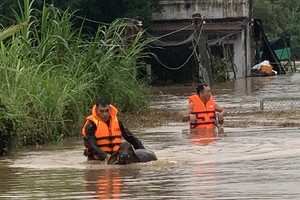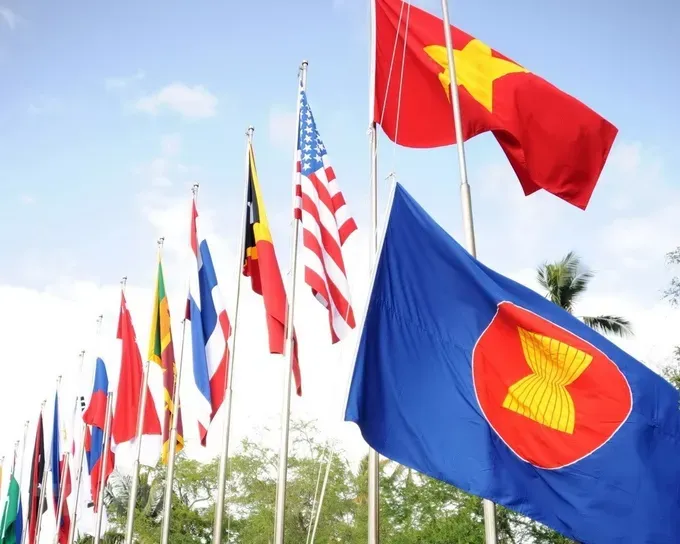
This modern diplomatic tradition is a powerful blend of enduring national strength and a keen understanding of global trends, rooted in the nation's thousand-year history of defending its sovereignty.
More than just safeguarding the achievements of its revolution, Vietnam's diplomacy has been instrumental in shaping a more equitable international order founded on legal principles. It champions the core tenets of sovereign equality among nations regardless of size and actively promotes a spirit of cooperation and mutual assistance across the region and the world.
From its origins as a newly independent nation emerging from dual colonial and fascist oppression, and under the visionary leadership of President Ho Chi Minh, Vietnam's nascent diplomatic corps quickly established its pivotal role. It proved crucial in protecting the revolutionary government and pioneering a flexible yet courageous approach, unafraid to confront formidable challenges head-on.
From the flames of war: Firmly pursuing the goal of independence and sovereignty
Immediately after the first National Assembly passed the first Constitution affirming the legitimacy of the Democratic Republic of Vietnam in November 1946, facing the pressure of a total military attack by colonial forces, Vietnamese diplomacy continuously promoted the legal nature of the two Preliminary Agreements on March 6, 1946 and the Provisional Agreement on September 14, 1946, referring to the principles in the United Nations Charter to continuously mobilize regional and international public opinion to condemn the unjust invasion of French colonialism.
The coordination between the two diplomatic and military fronts created an important foundation for Vietnam to maximize the effectiveness of victories on the battlefield, becoming victories that weakened the opponent's will at the negotiating table.
The most typical example is the Dien Bien Phu victory that "resounded throughout the five continents and shook the world" and was transformed into the result of the Geneva Agreement in 1954, forcing the French colonialists to recognize the territorial integrity and independence of the three Indochinese countries, and then the Dien Bien Phu victory in the air, which led to the US being forced to sign the Paris Agreement in 1973, accepting a complete withdrawal of troops from Southern Vietnam.
Facing powerful colonial and imperialist forces, Vietnamese diplomacy not only contributed to the completion of the strategic task of "fighting and negotiating" but also made an important mark in the history of world diplomacy as a model "flagship" in defeating both old and new colonialism, strongly encouraging the anti-war movement worldwide to help promote the national liberation movement in the 60s and 70s. This movement also shaped the trend of solidarity between small countries in Asia - Africa - Latin America, consolidating the foundation of cooperation between countries in the Southern Hemisphere later as an important foreign policy choice to help harmonize the opposing poles in international relations.
Putting the past behind, forging peace
Emerging from the devastation of war, Vietnamese diplomacy chose not to harbor resentment. Guided by the principle of 'closing the past, looking to the future', and seen by the international community as a symbol of human conscience and integrity, Vietnam proactively engaged in negotiations to normalize relations with major global powers. This removed significant barriers to the nation's international integration.
Simultaneously, Vietnam actively fostered peace in Southeast Asia. This was demonstrated by its adoption of the four-point statement with ASEAN in July 1976 and its support for regional harmony, as articulated in the Treaty of Amity and Cooperation in Southeast Asia (TAC) and the Declaration of ASEAN Concord, both signed at the first ASEAN Summit in February 1976.
Despite these efforts, the path to peace remained complex. Vietnamese diplomacy, alongside the entire nation, had to navigate two border wars—on the Southwest and Northern frontiers while also addressing deep-seated misunderstandings that eroded trust among regional and international allies. This was further complicated by economic embargoes that persisted for two decades.
The Doi Moi (Renewal) policies, introduced after the 6th Party Congress in 1986, marked a strategic shift. Vietnam’s foreign policy consistently pursued a course of "not doing things for others" to focus on national reconstruction, and "not following suit" to avoid the pitfalls of the former socialist system. Following the 1991 Paris Conference on Cambodia, Vietnamese diplomacy successfully solidified its reputation as a peace-builder on the world stage. It was only then that regional integration and the lifting of economic embargoes accelerated, culminating in July 1995. This landmark year saw Vietnam become an official member of ASEAN, immediately following the normalization of relations with the United States.
Integration and Growth: Vietnamese diplomacy in a new era
With the removal of key obstacles in international relations, Vietnamese diplomacy has fully leveraged its capacity to proactively and actively integrate the nation into the global economy on multiple fronts.
The country's diplomatic strategy has evolved significantly. From the 1988 resolution to ‘make more friends and fewer enemies’, it transitioned to the broader goal of ‘wanting to be friends’ and later, to the current status of ‘being a friend, a reliable partner, and a responsible member’ of the international community.
This evolution has led to impressive results. Vietnam now maintains diplomatic relations with 194 countries, economic ties with over 230 nations and territories, and membership in more than 70 regional and international organizations. The country has signed 17 free trade agreements and has 15 UNESCO-recognized World Cultural Heritage sites. The Communist Party of Vietnam has also forged relationships with more than 230 political parties in 119 countries.
About forging connections, Vietnam is actively collaborating with ASEAN to build a robust network linking resource-rich nations in the Southern Hemisphere. On the global stage, Vietnam has transformed from a former colony into a comprehensive strategic partner with all major powers in the Northern Hemisphere. The country has established a total of 12 comprehensive strategic partnerships, 8 strategic partnerships, and 14 comprehensive partnerships since the 10th Party Congress in 2006.
Through a diverse network of bilateral relationships spanning Asia, Africa, Latin America, Europe, and North America, Vietnam has played a pioneering role in fostering inter-regional cooperation mechanisms in both the Southern and Northern Hemispheres. These efforts, closely linked to the Southeast Asian region, help shape a more harmonious and multipolar international order where the interests of all nations, regardless of size, are respected.
